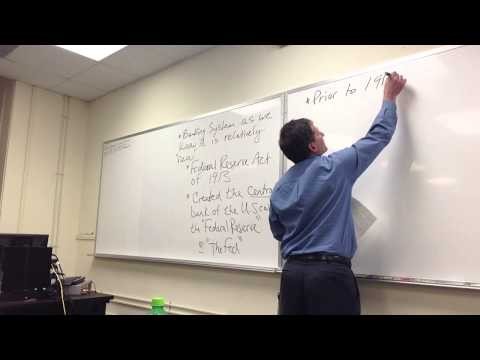The Federal Reserve System_1
Post on: 24 Август, 2015 No Comment

When countries issue currency. especially fiat currency that is not specifically backed by any commodity, it is necessary to have a central bank whose job it is to monitor and regulate the supply, distribution, and transacting of currency. In the United States, the central bank is called the Federal Reserve (i.e. the Fed). The Federal Reserve was created in 1913 and currently consists of the Federal Reserve Board in Washington, D.C. and twelve regional Federal Reserve banks located in Atlanta, Boston, Chicago, Cleveland, Dallas, Kansas City, Minneapolis, New York, Philadelphia, Richmond, San Francisco, and St. Louis.
The Federal Reserve system is overseen by a seven-member board of governors, with one member of this committee chosen as the chairman (commonly known as the Chairman of the Fed). The president of the United States is responsible for appointing Fed chairmen to four-year terms (with confirmation from the Senate), and the current Fed chair is Ben Bernanke. (The regular members of the board of governors serve fourteen-year terms.) The presidents of the regional banks are appointed by each individual branch’s board of directors.
The Federal Reserve system serves a number of functions, which generally fall into a couple of categories: first, it is the Fed’s job to ensure that the banking system stays responsible and solvent. While this does sometimes mean that the Fed has to work with the three branches of government to think about explicit legislation and regulation, it more often means that the Fed works in a transactional sense to clear checks and to act as a lender to banks that want to borrow money themselves. (The Fed does this mainly to keep the system stable and is referred to as the lender of last resort, since the process is not really encouraged.)
The other function of the Federal Reserve system is to control the money supply. The Federal Reserve can control the amount of money (highly liquid assets such as currency and checking deposits) in a number of ways. The most common way is to increase and decrease the amount of money in the economy via open-market operations.
Open-Market Operations
Open-market operations simply refers to the process of the Federal Reserve buying and selling U.S. government bonds. When the Federal Reserve wants to increase the money supply. it simply purchases government bonds from the public. This works to increase the money supply because, as the buyer of the bonds, the Federal Reserve is giving out dollars to the public. The Federal Reserve also keeps government bonds in its portfolio and sells them when it wants to decrease the money supply. Selling decreases the money supply because the buyers of the bonds give currency to the Federal Reserve, which takes that cash out of the hands of the public.
There are two important things to note about open-market operations: first, the Fed itself isn’t directly responsible for printing money. Printing money is handled by the Treasury, and there are multiple channels by which the money gets into circulation. (Sometimes, for example, the new money just replaces worn-out currency.) Second, the Federal Reserve doesn’t actually create or issue the government bonds, it just handles them in secondary markets. (Technically, open-market operations could be conducted with a number of different assets, but it makes sense for the government to manipulate the supply and demand of an asset that was issued by the government itself.)
Other Monetary Policy Tools
Although not used nearly as frequently as open-market operations, there are other tools that the Federal Reserve can use to change the amount of money in the economy. One option is to change the reserve requirement for banks. Banks create money in an economy when they loan out customers’ deposits (since both the deposit and the loan count as money), and the reserve requirement is the percent of deposits that banks have to keep on hand rather than lending out. An increase in the reserve requirement, therefore, restricts the amount that banks can lend out and thus reduces the money supply. Conversely, a decrease in the reserve requirement increases the amount of loans that banks can make and increases the money supply. (This, of course, assumes that banks want to lend more when they are allowed to do so.)
The Federal Reserve can also change the money supply by changing the interest rate that it charges banks when it acts as the lender of last resort. The process by which banks borrow from the Federal Reserve is called the discount window. and the interest rate that the federal Reserve charges is called the discount rate. When the discount rate is increased, it is more expensive for banks to borrow in order to cover their reserve requirements. Therefore, a higher discount rate causes banks to be more careful about reserves and make fewer loans, which reduces the money supply. On the other hand, lowering the discount rate makes it cheaper for banks to rely on borrowing from the Federal Reserve and increases the amount of loans they are willing to make, thus increasing the money supply.
Decisions regarding monetary policy are handled by the Federal Open Market Committee. which meets approximately every six weeks in Washington in order to discuss changing the money supply and other economic issues.














